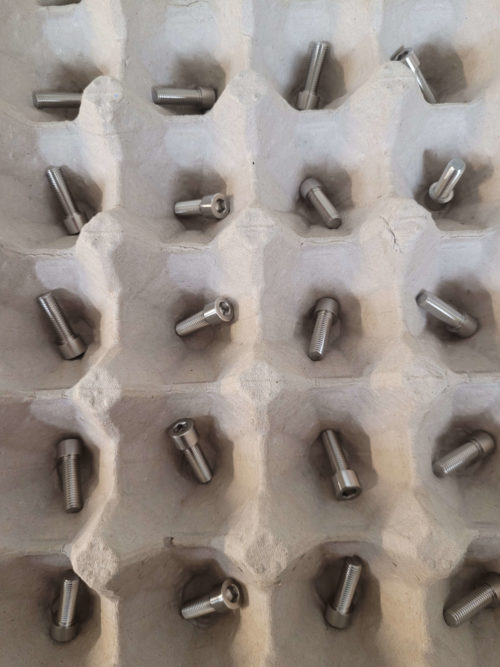Is A286 Stainless Steel Right for Your Application?
At Peerless Precision, we know quality when we see it. If a material offers superior strength and functionality for our customers’ critical applications, we’ll always learn how to work with it—even when machining it can be a bit of a bear.
Take, for example, A286 stainless steel. Like most extremely strong materials, this precipitation-hardenable superalloy is challenging to machine. However, for many applications, its benefits far outweigh its drawbacks.

Common A286 Stainless Steel Part Types
A286 stainless steel is commonly used for parts such as:
- Bushings
- Cryogenic components
- Gas turbines
- Jet engine components
- Screws
- Strainer caps
Benefits of A286 Stainless Steel
There are a few properties that make A286 a popular choice for aerospace and defense applications in particular.
Strength
A286’s exceptional strength enables it to withstand the extreme conditions to which aircraft parts are frequently exposed. Strong materials have excellent longevity, so aerospace manufacturers can rest assured they won’t have to replace A286 parts often.
Corrosion resistance
A286 resists corrosion at temperatures up to 1,300 degrees Fahrenheit—a must for critical aerospace parts such as jet engine components. If your steel part will be in a corrosive environment, A286 is an ideal choice.
Nonmagnetic properties
A286 is nonmagnetic, making it a great option for cryogenic components, like the submicro cryogenic cooling systems we manufacture for the US military. Using a nonmagnetic material ensures that the end assembly will function properly.
Drawbacks of A286 Stainless Steel
Just as every rose has its thorn, every strong material has various drawbacks to consider.
Weight
One thing A286 stainless steel isn’t is lightweight. Although materials like aluminum and titanium are far lighter, A286 is still commonly used due to its many beneficial properties.
Sourcing
Like many materials, A286 is fairly difficult to procure given current supply chain challenges. Depending on the size and amount needed, you could face a lead time of six months or longer when ordering A286.
Cost
A286 is up to 5x more expensive than other stainless steel grades. For this reason, we recommend reserving it only for parts that require its specific properties rather than using it as a go-to for generic parts.
The cost of using A286 is further increased by its slow precision machining runtime. This material can take up to 3x longer to machine than aluminum and other stainless steel alloys. And because A286 wears tools down quickly, pricing for machined parts also includes the cost of the additional tooling that will be required.
Finally, A286’s nonmagnetic properties extend how long it takes to perform secondary operations, such as surface grinding, since the material must be ground with a coolant. This process requires custom fixturing, which further increases cost and lead time.
Peerless Precision Specializes in Machining A286 Stainless Steel
At Peerless Precision, we’re no strangers to working with challenging materials like Inconel, tungsten, titanium, and A286. While some precision machine shops might no-quote projects involving these materials, we’ve found a way to master them for the benefit of our customers.
We recognize that A286 is essential to the industries we serve, so we’ve made it our business to machine it skillfully. And because we’ve been working with A286 for more than two decades, we know how to make the precision machining process as cost-effective and efficient as possible.
If you’re looking for a shop that won’t be intimidated by a challenge, give us a try. Request a quote today.





Comments are closed